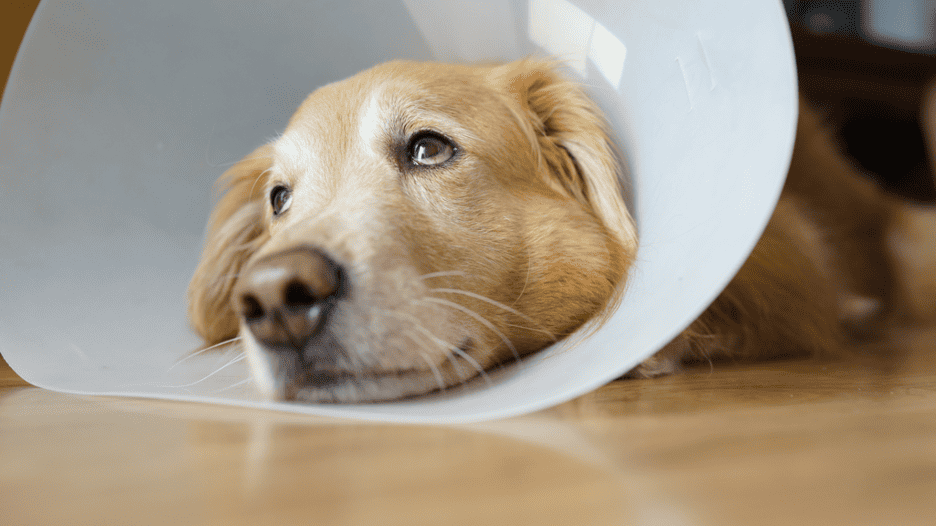Pet Insurance That Covers Hip Dysplasia [Short Guide]

Hip dysplasia is an increasingly prevalent condition that affects many dogs, causing pain and mobility issues. Fortunately, pet insurance that covers hip dysplasia is available and may help alleviate your worries. Let’s explore hip dysplasia’s symptoms and prevention techniques. We’ll also examine whether pet insurance policies typically cover hip dysplasia and any associated waiting periods, breed restrictions, and limitations.
What Is Hip Dysplasia?
Hip dysplasia is a skeletal condition most frequently found in dogs. However, cats may also be affected. It involves abnormal development of the hip joint where its ball and socket do not fit together correctly, which results in pain and discomfort.
Hip dysplasia, an incurable malformation of the joints, can cause joint instability, pain, and decreased mobility. Common symptoms may include difficulty standing up from a sitting position, resistance to physical activity such as running, bunny-hopping, and lameness in hind limbs.
Though its exact cause remains elusive, hip dysplasia is thought to be caused by genetic and environmental influences, including rapid growth, improper nutrition, and excessive exercise at a young age. Hip dysplasia cannot be completely prevented, but measures such as proper nutrition, controlled exercise, and selective breeding practices may be taken to minimize risks.
Breeds at High Risk for Hip Dysplasia
- Cane Corso: Studies have revealed an incidence of hip dysplasia in Cane Corsos of up to 51.9%, highlighting the need for thorough health screening and insurance coverage.
- Rottweiler: When compared to the general canine population, Rottweilers regularly have a higher incidence rate of hip dysplasia. It’s crucial to use ethical breeding and medical methods.
- Golden Retriever: Despite their widespread popularity, Golden Retrievers are prone to hip dysplasia. Regular exercise, weight control, and veterinarian care are essential to effectively manage this illness.
- German Shepherd: Screening and genetic testing are crucial in breeding operations since German Shepherds are prone to hip dysplasia.
- Labrador Retriever: Another well-liked breed that is susceptible to hip dysplasia is the Labrador Retriever. For their health, responsible breeding practices and routine veterinarian examinations are essential.
Is Hip Dysplasia Covered By Health Insurance?
Coverage for hip dysplasia in pets depends on the insurance provider and policy. Some plans provide this benefit as part of their standard plans, while others might offer it as an add-on or upgrade package. Odie Pet Insurance stands out as a prominent pet insurer covering hip dysplasia treatment with The Illness & Injury Plan. At an average of $25/month for cats and $45/month for dogs, this plan specifically covers hip dysplasia and associated treatments.
As a pet owner, it’s important to be aware that hip dysplasia is a chronic and degenerative condition, so if your dog has any symptoms (even if very mild), it won’t be covered by insurance. This is why it’s essential to get pet insurance when your dog is still a puppy, particularly if their breed has a high predisposition to hip dysplasia.

Do Pet Insurance Policies Covering Hip Dysplasia Have Waiting Periods?
Pet insurance policies that cover hip dysplasia typically have waiting periods. A waiting period refers to the amount of time after purchasing a policy before coverage starts, and you can file a claim for certain conditions or treatments. This period typically ranges from several weeks to several months for hip dysplasia, depending on your insurance provider.
Odie pet insurance has a 14-day waiting period for illnesses like hip dysplasia under The Illness & Injury Plan.
Are There Any Breed Restrictions or Limitations for Pet Insurance Coverage of Hip Dysplasia?
Many pet insurance providers impose breed-related limitations or restrictions when covering hip dysplasia since breeds are more prone to hip dysplasia due to their genetic makeup.
Insurance providers may consider certain breeds high-risk and exclude or place restrictions or limits on coverage for them, so it’s wise to inquire directly with any provider regarding breed-specific coverage before purchasing a policy.
Odie is an example of a provider that offers pet insurance coverage with no breed restrictions.
How Much Does Hip Dysplasia Treatment Cost?
Treatment costs for hip dysplasia vary based on several factors, including treatment type, geographical location, and severity. Options for your pet range from conservative weight management, physical therapy, and pain medication to more invasive surgeries such as total hip replacement or Femoral Head Ostectomy (FHO).
Conservative management costs anywhere from several hundred to several thousand dollars annually when considering expenses like medication, supplements, and physical therapy sessions. Surgical interventions, like total hip replacement or FHO surgery, are more costly. Total hip replacement can range anywhere from several thousand to over ten thousand dollars, while FHO usually ranges between $1,000 to $4,000.

Is Hip Dysplasia Covered as a Pre-existing Condition?
Pre-existing conditions are generally excluded from pet insurance policies, so any treatments or expenses related to them won’t be covered. Unfortunately, hip dysplasia can often be considered a pre-existing condition when your pet is diagnosed or shows symptoms before an insurance policy’s effective date.
As soon as your pet is diagnosed with hip dysplasia, insurance companies will likely consider it a pre-existing condition and offer coverage accordingly. Therefore, you should try to secure pet insurance as early as possible when your dog or cat is still young and healthy.
What Is the Process for Filing a Claim for Hip Dysplasia Treatment Under a Pet Insurance Policy?
To file a claim for hip dysplasia treatment for your pet, you’ll first need to get The Illness & Injury Plan. After the 14-day waiting period, you’ll need relevant documentation, such as veterinary records, diagnostic test results, and invoices from treatment expenses.
Then, submit a claim online via Odie’s online customer portal. Carefully follow the instructions when filing a claim, making sure all necessary information and supporting documents are included.
Once your claim is submitted, it will be reviewed, and if approved, reimbursement will be made according to policy terms and conditions.
FAQs
Can A Dog Live a Full Life with Hip Dysplasia?
Dogs with hip dysplasia can lead full lives with proper management and treatment. Although it cannot be cured, treatment options include medication, supplements, physical therapy, weight management strategies, surgery, and more.
Can Dogs Live with Hip Dysplasia Without Surgery?
Yes, dogs with hip dysplasia can live comfortably without surgery in cases where it is mild or doesn’t significantly limit the quality of life. Conservative management techniques may provide effective relief.
Is Hip Dysplasia Painful in Dogs?
Hip dysplasia can cause considerable pain for dogs. The intensity of their discomfort varies based on joint instability and inflammation.
What Happens if You Don’t Treat Hip Dysplasia in Dogs?
Hip dysplasia can lead to joint degeneration, increased pain and discomfort, decreased mobility, and over time could worsen, significantly decreasing quality of life and leading to secondary complications like arthritis.
Can Dog Hip Dysplasia Heal On Its Own?
Hip dysplasia cannot heal on its own due to structural abnormalities in the hip joint that cannot be reversed without medical intervention. Hip dysplasia is a degenerative condition, and without proper treatment, intervention, and care, it will progressively become worse and more debilitating over time. For this reason, it is important to work with your veterinarian to develop a comprehensive treatment and management plan as soon as your pet is diagnosed with hip dysplasia.
Do Dogs Cry with Hip Dysplasia?
Dogs tend not to react directly to hip dysplasia by crying out. However, they may display signs of pain, discomfort, or distress, including whimpering, vocalizations, changes in behavior, and an unwillingness to engage in physical activities.
How Long Does It Take a Dog to Recover from Hip Dysplasia?
Recovery from hip dysplasia depends on several factors, including its severity, treatment method, and response from each dog. If surgery is required, recovery typically lasts from several weeks to several months, while non-surgical management options require ongoing care and monitoring throughout their lives.
Click here to read more on the limits and benefits of pet insurance.
